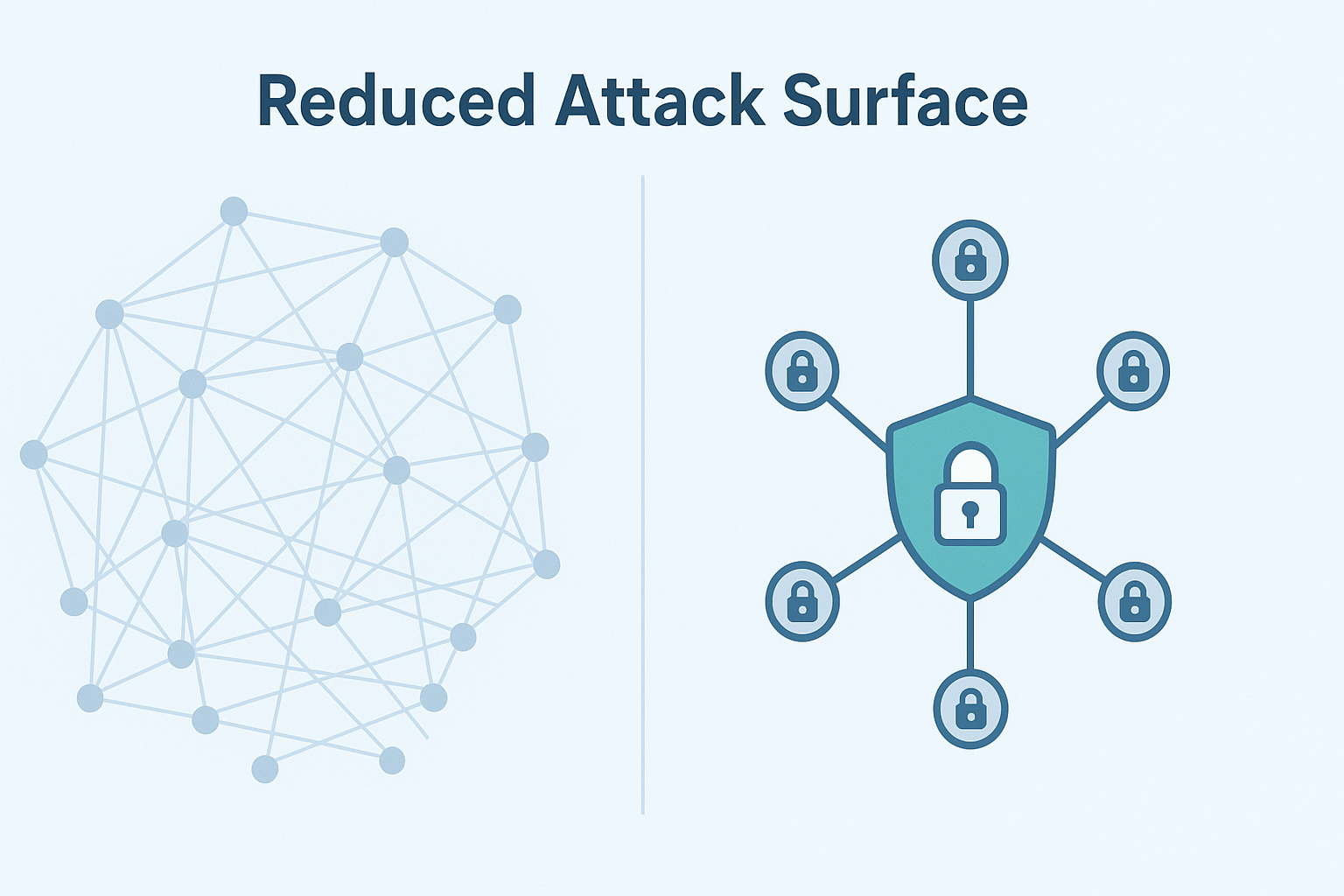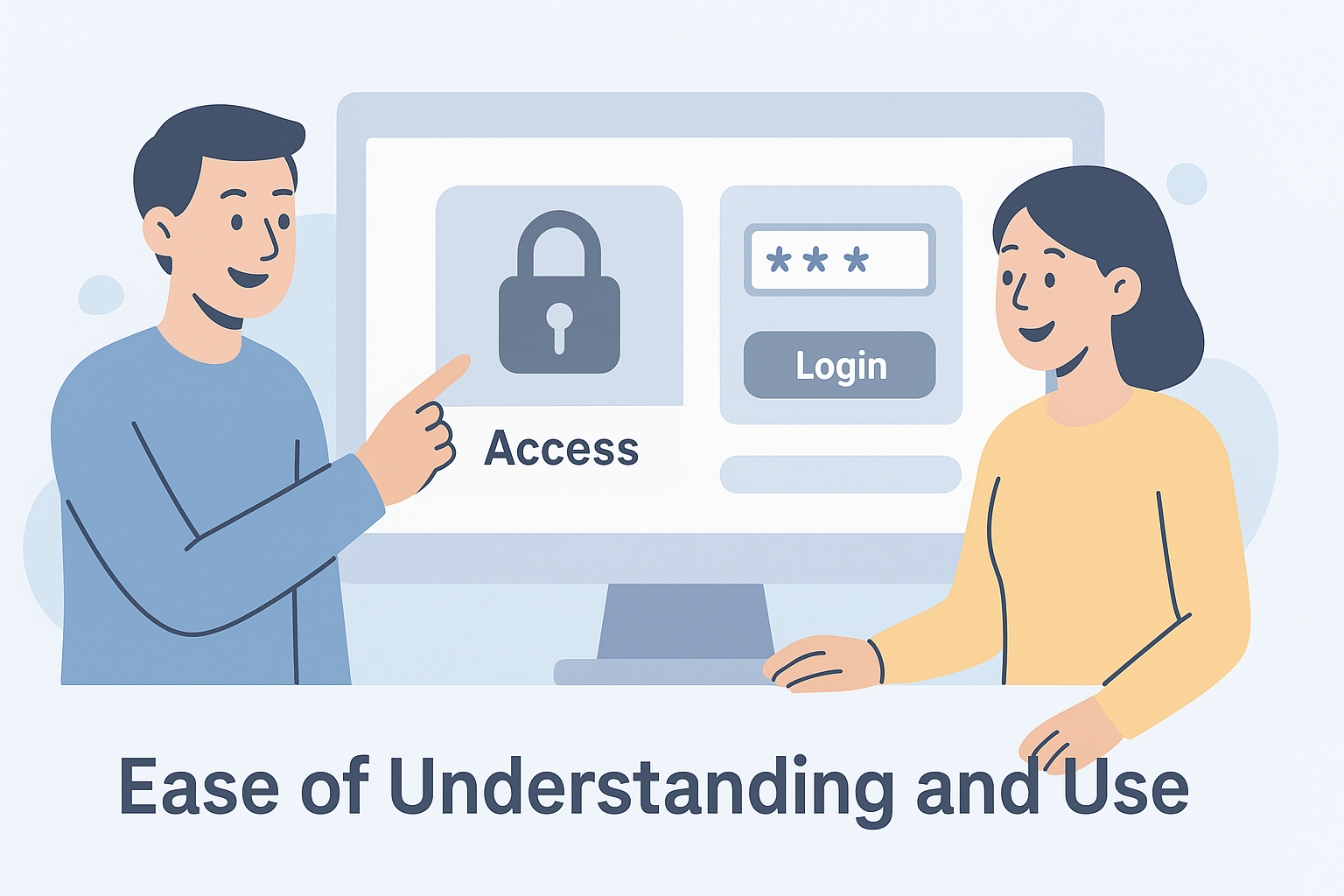
A strong security setup doesn’t need fancy bells and whistles. Our team learned this firsthand while running secure development workshops, stripped-down systems hold up better over time. Building with minimal components reduces weak spots, and developers catch issues faster during testing.
We’ve watched countless teams struggle with overly complex setups, but the pattern stays consistent: straightforward design paired with secure code works. The security landscape changes daily, yet this approach helps teams spot problems quickly and fix them properly. Want to learn how top companies keep their systems locked down? Let’s explore.
Key Takeaway
- Simple security reduces vulnerabilities by limiting components and interfaces.
- It improves user experience and compliance with easy-to-understand controls.
- Maintenance becomes easier and more cost-effective, lowering operational risks.
What Is Simple Security Design and Why Does It Matter?
Simple security design means minimizing complexity while holding onto the core protections your system needs. We’ve realized that too many layers or confusing features can actually open doors for mistakes or overlooked flaws. Keeping things straightforward makes security more manageable and effective, especially when threats evolve fast. This matters because complicated setups often lead to misconfigurations and delays in responding to incidents. Understanding the importance of simplicity in security helps ensure every layer of protection remains clear and predictable, allowing developers and admins to keep systems safe with confidence.
- Simple design avoids unnecessary features.
- It helps keep security controls transparent.
- Makes compliance and audit processes easier.
This approach doesn’t mean skipping important safeguards. Instead, it means trimming excess and focusing on what truly defends your system. When you simplify, you also make it easier to integrate secure coding practices, which sets a strong foundation for the entire lifecycle.
Reduced Attack Surface

The fewer parts your security system has, the smaller its attack surface becomes. (1) That means fewer opportunities for hackers to find weak spots. We’ve noticed that when firewalls run only essential rules instead of dozens of complicated ones, they tend to be more reliable and less prone to errors.
Less complexity means:
- Fewer exploitable vulnerabilities.
- Easier to spot and fix issues.
- Systems inherently safer by design.
For example, a firewall configured with just the necessary rules is easier to audit and less likely to have hidden loopholes than one burdened with redundant or conflicting settings.
💡 Pro Tip: Regularly review and remove unnecessary components from your security systems.
Ease of Understanding and Use

Security only works if people actually follow it. Simple security design makes policies and controls easier for admins and users to understand. When we write clean, clear password policies or set up intuitive access controls, users comply better because they know what’s expected.
Simple systems mean:
- Fewer mistakes due to confusion.
- Faster onboarding with minimal training.
- Reduced support calls and errors.
We once encountered a team struggling with a complex multi-factor authentication process. One team we observed had poor MFA adoption until we simplified both process and interface, compliance improved significantly. After switching to a simpler, clearer system, user compliance improved significantly. Clear documentation and straightforward controls make all the difference.
Better Testing and Verification

Testing complex security systems can be a nightmare. The more moving parts, the harder it is to confirm everything works as intended. (2) We’ve found that simpler systems allow for thorough and repeatable testing, which boosts confidence in security.
Simple security benefits testing by:
- Making it easier to cover all cases.
- Reducing false positives and negatives.
- Enabling automated checks.
Take encryption algorithms for instance. A straightforward, well-understood method is easier to verify than one with layers of obscure tweaks. That clarity helps us catch vulnerabilities early and keep patches on track.
Fewer Failure Points
Every component in a security system is a potential point of failure. Simplified mechanisms reduce these failure points, leading to more dependable systems. We’ve seen basic intrusion detection setups outperform bloated alternatives simply because there’s less that can go wrong.
Fewer failure points mean:
- Increased system robustness.
- Less downtime due to errors.
- Easier troubleshooting.
When a system is stable, admins can focus on proactive defense rather than firefighting unexpected breakdowns.
Reminder: Prioritize reliability by choosing security solutions with minimal dependencies.
Easier Maintenance and Updates
Maintenance often turns into a major headache when security systems are overly complex. We’ve experienced how simple designs make applying updates or patches much safer and faster. Fewer components mean less chance of introducing new errors.
Advantages include:
- Reduced time and effort.
- Lower likelihood of misconfiguration.
- Cost savings on support and administration.
For example, updating a simple web server with clear configurations is much less risky than juggling a complex application server with multiple integrated modules.
Cost-Effectiveness
Simple security design translates can significantly reduce cost drivers such as maintenance overhead and training time. Development requires fewer resources and operations run more smoothly. Maintenance costs drop because it’s easier to troubleshoot and fix issues.
Cost benefits include:
- Lower upfront development expenses.
- Reduced operational overhead.
- Decreased support and training costs.
We once implemented a straightforward access control system instead of a pricey biometric setup. The result was solid security with a fraction of the cost, proving that simpler doesn’t mean weaker.
Lower Risk of Misconfiguration
Misconfiguration is among the leading causes of breaches; simpler design helps mitigate this risk. We’ve learned that sticking to simple design principles minimizes these risks and strengthens overall security posture.
Simple design helps by:
- Minimizing configuration errors.
- Providing clear responsibility and documentation.
- Supporting consistent review and audit.
For instance, segmenting a network with clear, simple rules avoids the confusion of flat, sprawling networks that are tough to secure properly.
Note: Use configuration management tools to ensure consistent and accurate security settings.
Improved User Experience
User cooperation is critical. Simple security systems with intuitive controls encourage compliance and reduce frustration. We’ve seen two-factor authentication apps with clear interfaces get much better adoption than confusing ones.
Benefits include:
- Higher user satisfaction.
- Faster adoption of security measures.
- Stronger enforcement of policies.
Clear, straightforward systems lead to better trust and less resistance from users, which ultimately improves security effectiveness.
Supports Secure Development
Credits: Northland Controls
Secure coding practices are easiest to apply when the overall design stays simple. We integrate security early by using well-defined APIs and limiting unnecessary complexity. This proactive approach leads to better risk identification and mitigation throughout development.
Advantages include:
- Early detection of vulnerabilities.
- Easier implementation of defenses.
- More predictable and stable systems.
💡 Pro Tip: Incorporate security considerations from the initial stages of software development.
Caution Balancing Simplicity and Essential Security

Simplicity should never mean sacrificing key protections. While it’s wise to keep it simple, teams must ensure that essential controls stay intact and continue to serve their purpose effectively.
Keep in mind:
- Avoid unnecessary complexity that doesn’t add value.
- Maintain robust controls and safeguards.
- Regularly review your security design.
Reminder: Regularly assess your security design to ensure it provides adequate protection without unnecessary complexity.
FAQ
What makes simple security effective in today’s fast-moving systems?
Simple security works because fewer components and minimal interfaces mean a reduced attack surface and minimal exposure. It creates predictable behavior, lower risk, and stable systems. With clear documentation and straightforward updates, teams save time while keeping a competitive posture and ensuring resilience through proactive defence.
How do design principles like least privilege and defense in depth improve reliability?
Design principles such as least privilege, separation of duties, and defense in depth help create secure by design systems. They reduce vulnerability, limit damage from breaches, and increase reliability. This structured approach leads to simplified control, robust controls, improved governance, and effective implementation across complex, scalable security environments.
Why does a simplified infrastructure improve maintainability and cost savings?
Simplified infrastructure supports maintainability, cost savings, and lower support cost through lean architecture and resource efficiency. With minimal dependencies and fewer components, patch management and automation become easier. This leads to simplified monitoring, faster response, and long-term value for organizations seeking operational efficiency and business risk reduction.
How does simplicity enhance user experience and compliance?
When systems are easy to use and built with intuitive controls, users make fewer errors. Simplified control and clear responsibility support compliance and auditability. Transparent processes, standardized secure defaults, and effective policies encourage improved trust. The result is a positive user experience with reduced burden and faster adoption.
How does simple security help during testing, updates, and incident response?
A simple, cost-effective setup improves testing ease, faster response, and efficient administration. With minimal configuration and minimal misconfiguration risks, teams handle patch management and incident response smoothly. Streamlined operations, clear responsibility, and responsive processes strengthen resilience, reduce failure points, and support consistent review for regulatory compliance and high quality outcomes.
Conclusion
Simple security design improves reliability, reduces risk, and saves money by cutting out needless complexity. From our own experiences, integrating secure coding practices early and focusing on clear, minimal controls makes security easier to manage and more effective. It improves user compliance and reduces errors, helping maintain a stable system over time. If you’re looking to strengthen your security posture without overburdening your team or budget, adopting simple design principles should be a priority, because unnecessary complexity is the enemy of security and simplicity remains your strongest defense.
The next step is to review your current security setup with an eye for trimming excess, clarifying controls, and ensuring you’re building on a foundation of secure coding practices. This approach not only protects your assets better but also makes day-to-day security work less daunting and more sustainable.
Ready to simplify your security? Start by identifying the areas where complexity adds little value but creates risk, then focus on implementing straightforward, effective controls that everyone can understand and follow. To gain hands-on experience in building secure, efficient systems, consider joining the Secure Coding Practices Bootcamp, a practical program that helps developers master real-world secure coding through guided labs, clear instruction, and actionable skills you can apply immediately.
References
- https://fidelissecurity.com/cybersecurity-101/learn/what-is-an-attack-surface/
- https://binmile.com/blog/secure-design-principles/

